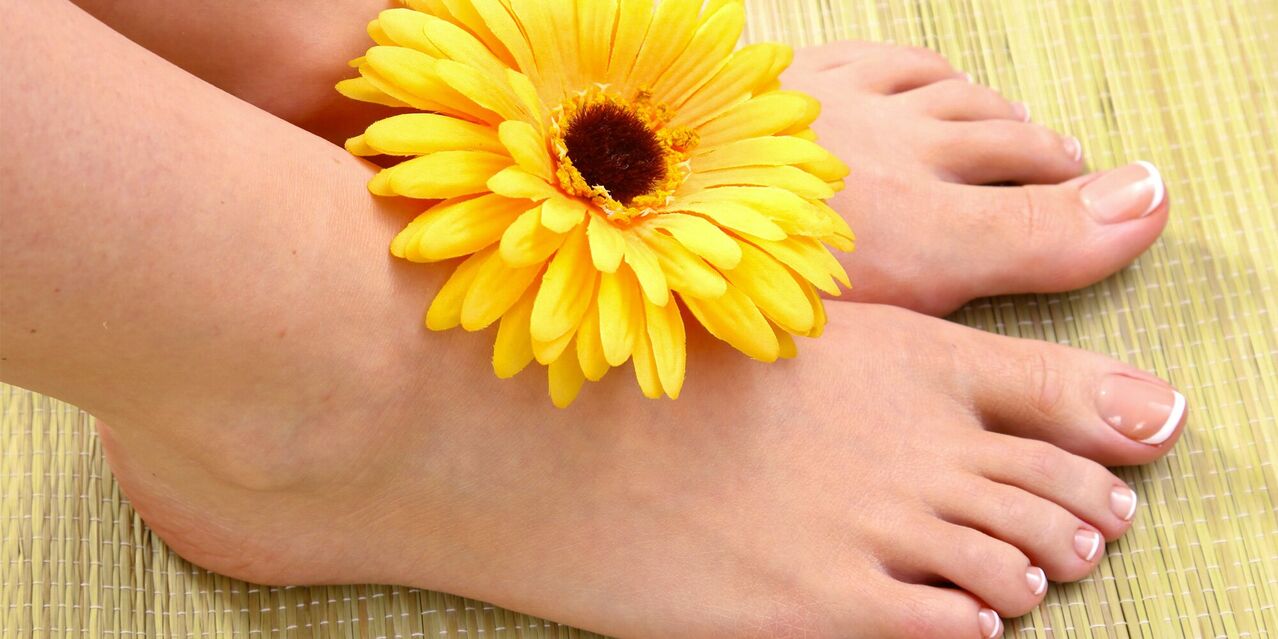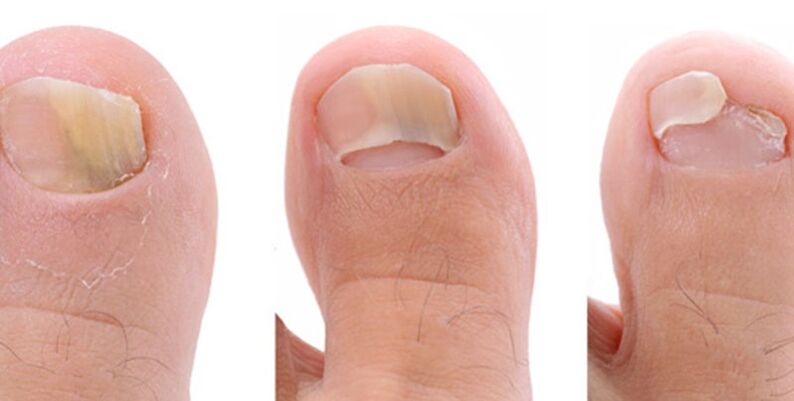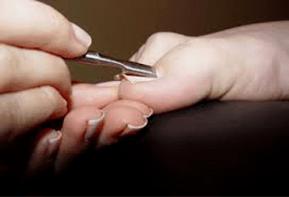Toenail fungus is a widespread infection caused by opportunistic and pathogenic fungal infection dermatophytes. About 20% of adults suffer from onychomycosis and it is almost undetectable in children.

Cause of infection
Fungi are widespread in the environment, but only under favorable conditions do damage to nails and human skin. As we age, the acidic pH of the skin becomes alkaline, which favors fungal growth. Infection usually occurs through contact, and if personal hygiene practices are not followed, the source of infection may be a sick person or commonly used items. Infection can occur in public places: swimming pools, saunas, gyms. And slippers, socks, nail accessories, towels and towels are also commonly used in everyday life.
Predisposing factors for onychomycosis infection include:
- decrease in immunity;
- Poor circulation in the legs, including when wearing tight shoes;
- excessive sweating;
- diabetes;
- obesity;
- Mechanical damage to the nail;
- Deformities and anatomical features of the foot.
signs of toenail fungus

Nail fungus is a very persistent infection and the initial stages of the disease manifest as:
- Discoloration of the nail plate, loss of luster;
- increase vulnerability;
- itching and irritation of the skin around the affected nails;
- pain at the site of the lesion, especially when wearing tight shoes;
- Detach part of the nail from the nail bed.
As the entire nail plate progresses and participates in the process, new symptoms appear: the nails are noticeably thickened and deformed.
Depending on the degree of nail damage, three types of onychomycosis can be distinguished:
- Normal nutrition - manifested as a change in nail color from white to dark green. The color changes in spots or streaks at first, gradually covering the entire surface of the nail, while the thickness of the nail plate remains the same and the luster remains.
- Hypertrophy - manifested by discoloration, loss of luster, and severe thickening and deformation of the nails. Strong peeling and partial destruction of the nails;
- Atrophy - through discoloration, thinning and subsequent rejection of the affected area.
Which doctor treats fungus?
You can identify the infection yourself, but only a doctor can confirm the diagnosis. If you notice changes in nail color and increased fragility, you should consult a dermatologist. Doctors prescribe diagnostic microscopy or cultural studies to confirm the diagnosis. Take a portion of the affected nail for analysis or scrape off nearby tissue. The timely detection of nail fungus greatly facilitates treatment and prevents complications. Triggered onychomycosis is dangerous because it can lead to fungal eczema, aspergillosis, weakened immunity, infection of all nails, skin and other organs.
Toenail Fungus Treatment

How to treat onychomycosis is determined by the doctor based on the degree of change in the nail plate, the clinical form, the degree of hyperkeratosis, and the length of the affected area. For treatment, topical medications (ointments, drops, sprays, varnishes) and general medications (antifungals) are used.
Usually, in the case of small changes in the nails, medication is used for topical treatment. Before treatment with antifungal solutions, ointments, varnishes, the affected area of the nail should be removed surgically or with the help of keratolytic drugs. This is necessary for antifungal drugs to better penetrate damaged tissue, which can allow you to get rid of the fungus faster.
Keratolytics help to soften nails and remove easily and painlessly, are produced in the form of plasters and include urea or salicylic acid:
- Urea-formaldehyde plastic;
- Urea cream with quinolone;
- quinoline-salicylic acid patch;
- carapace plastic;
- quinosol-dimexide patches;
- Cladospores (joint preparation).
Before applying the plaster, it is necessary to scrape off the top layer of the nail, then apply the treatment and stick it with tape, changing the bandage every 1-2 days. Before changing, remove the affected area of the nail with scissors and apply an antifungal agent.
Antifungal creams, ointments and drops are:
- Based on ketoconazole;
- Derivatives of clotrimazole;
- based on miconazole;
- Oxyconazole derivatives;
- based on terbinafine;
- Chloronitrophenol derivatives;
- Based on naftifine.
It is best to apply ointments, creams and drops to an open nail bed 2-3 times a day until the nail finally recovers. These drugs are active against the vast majority of pathogens but cannot penetrate the entire depth of the nail plate.
Topical antiseptics - iodine solutions, dyes, quinols, organic acids are often used to treat nail fungus if other methods are not available. The main advantage is that preservatives are inexpensive and widely available. A topical antiseptic, such as iodine, is used to treat affected nails up to 3 times a day for a month. When applying the solution, it is recommended not to touch the surrounding skin to avoid burns. Burning and tingling can help identify the onset of exposure.
Antifungal tablets are additionally prescribed by a specialist if topical treatment is ineffective.
Correctly selected combination therapy can help to cure advanced onychomycosis fastest. In addition, a combination of topical and general treatments was administered to more than three affected nails in people over 50 with slow-growing nails. The use of combination therapy can significantly shorten the duration of the course of treatment.
Treating Fungus with Folk Remedies

For the preparation of antifungal at home, you can use - apple cider vinegar and herbal preparations:
- Mix equal parts vegetable oil and apple cider vinegar, apply the solution on a cotton pad and apply to the affected nail for 4 hours. For convenience, the bandage can be secured with tape. The procedure is carried out daily for a month;
- For the treatment of a neglected process, a mixture of 9% vinegar and celandine helps, and the resulting composition should be infused for a month. Then add 50 grams of salt. The resulting product is used in a foot bath 5-10 minutes before bedtime. It is important not to rub your feet after a bath, but to let them dry on their own;
- To treat affected nails, you can use a propolis alcohol solution, fruit juice or onion, garlic porridge. A mixture of lavender oil and tea tree oil also works well.
- Herbal Soup for Foot Bath: Mix Oak Bark, Calendula, Horsetail, Verbena in equal proportions. Pour 50 g of the resulting mixture into boiling water and keep in the water bath for about 15 minutes.
prevention
Fungal damage to nails can be easily avoided with good personal hygiene:
- It is necessary to wash your feet daily with antiseptics.
- Dry your feet with a personal towel.
- Use a pumice stone to remove old skin, which is a good growth medium for fungi.
- Use medication that reduces sweating of the feet.
- Change socks, knee socks and tights daily.
- Wear loose, comfortable shoes. Do not wear wet shoes.
- Wear shoes when visiting pools and showers.
- Do not use other people's shoes, slippers, socks, towels, nail accessories.
- Use medicinal preparations for protection before going to the beach, swimming pool, sauna.
















